Rare Prototype BTR-90 Vehicle Seen in Combat in Ukraine
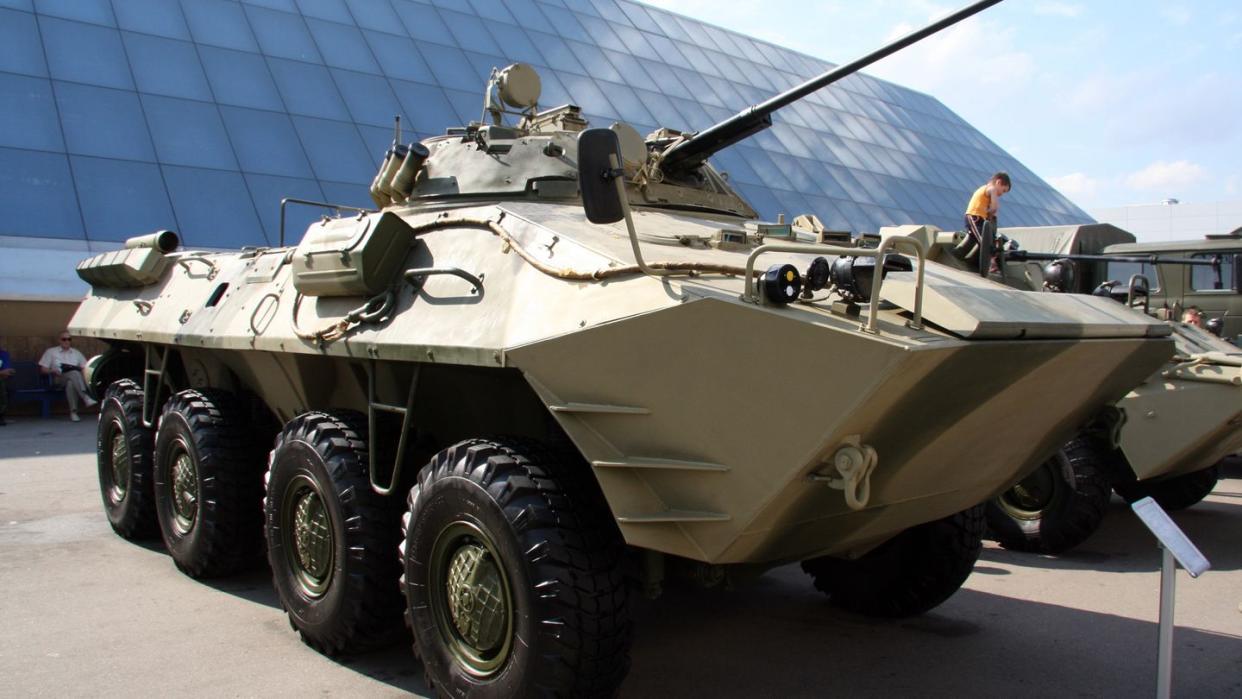
On Wednesday, October 11, armored units from Russia’s elite 1st Guard Tanks Army launched a large-scale attack on Ukraine’s fortifications near Avdiivka in Eastern Ukraine.
Despite initially surprising the 2-4 Ukrainian brigades defending Avdiivka, the Russian offensive rapidly ground to a halt in the face of anti-tank missile teams, artillery, drones, and dense anti-tank minefields. At least 34 and as many as 70-100 Russian main battle tanks (T-62, T-80s, and T-90s) were destroyed, and even more lighter armored vehicles met the same fate.
Nonetheless, Russia’s military posted point-of-view combat footage from this sector, showing several tanks blasting at Ukrainian defensive positions with their stabilized 125-millimeter guns. The tanks sport cope cage ‘umbrellas’ to protect against drone-attacks, and are thoroughly girded with explosive reactive armor (ERA) bricks to defeat anti-tank rockets.
First ever BTR-90 in action. Less than a dozen made and stored in Russia #38 research institute https://t.co/yocNQ3exHL pic.twitter.com/4gAcocJO49
— Andrei_bt (@AndreiBtvt) October 13, 2023
In the last five seconds of the video, observers noticed a rare BTR-90 Rostok (“Sprout”) armored personnel carrier with infantry riding atop its hull. It’s just one of a dozen prototypes and has never been used in combat before. Several already serve as museum displays.
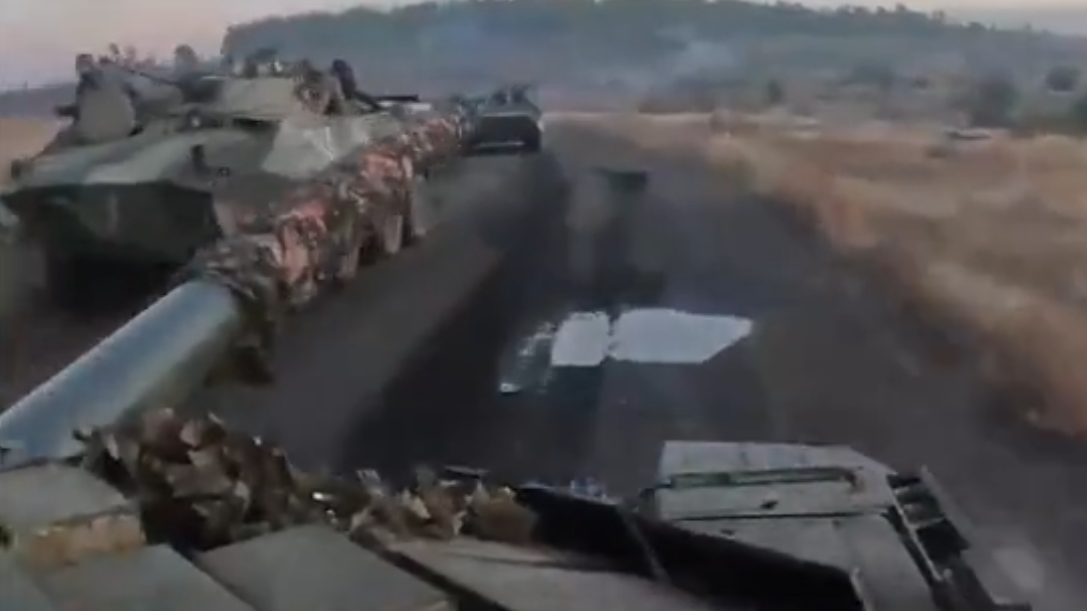
This particular BTR-90 appears to be vehicle 2B12LT1932, which was shown at a 2008 arms exhibition. Markings on its hull appear to show that it belongs to Russia’s 114th Separate Motor-Rifle Brigade, formed from a Donetsk separatist regiment.
Armed forces typically don’t bother using the limited-production prototypes in their possession operationally, as supporting micro-fleets of non-standard vehicles in the field without robust supply chains is often seen as more trouble than it’s worth.
But Russia has suffered massive armored vehicle losses as of the fall of 2023, including over 730 BTR-80 and BTR-82A wheeled vehicles that have been confirmed destroyed or captured. So Russia, like Ukraine, is desperate for all of the APCs and infantry fighting vehicles it can get—even designs that were built only in boutique quantities that could prove tricky to sustain in the field.
BTR-90: BMP on Wheels
In the 1960s, the Soviet Union arrived at a definitive model for mechanizing Red Army infantry—elite tank divisions would be accompanied into battle by BMP-series tracked infantry fighting vehicles (IFVs) armed with autocannons and anti-tank missiles. But the second-tier Motor Rifle Divisions, forming the bulk of the Red Army, instead received a series of progressively improved eight-wheeled BTR armor personnel carriers.
Ranging from 11 to 15 tons, BTRs were cheaper to build and sustain in the field, more efficient when using highways, more lightly armed (with 14.5-millimeter heavy machine gun turrets), and protected against small arms with steel armor just 7-10 millimeters thick. All could be quickly field-modified for amphibious capability using water jet propulsion and were designed to shield passengers and crew from nuclear, biological, and chemical threats (save for open-top BTR-60Ps built before 1963).
Successive BTR-60 and BTR-70 models up-tweaked the limited armor protection and poor ergonomics. The ultimate BTR-80 finally consolidated the prior models’ two gas engines into a single, more powerful 260-horsepower diesel engine. But all BTRs had rear-mounted engines, meaning that disembarking infantry had to clamber out of exposed side hatches, instead of down a safer rear ramp like on the boxy American M113 APC.
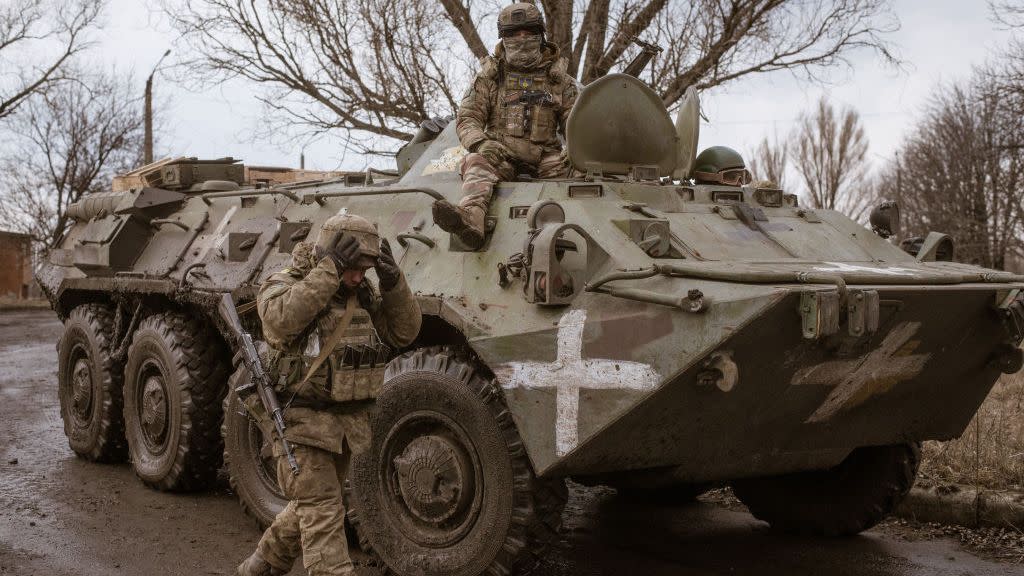
In the late 1980s, work on a fourth generation BTR-90 aimed to give Soviet motor-rifle squads the firepower needed to battle IFVs entering service with NATO like the Bradley, the Marder, and the Warrior. The resulting BTR-90 (or GAZ-5923) mated the enlarged hull of a BTR-80 with the 30-millimeter cannon turret of a BMP-2 fighting vehicle.
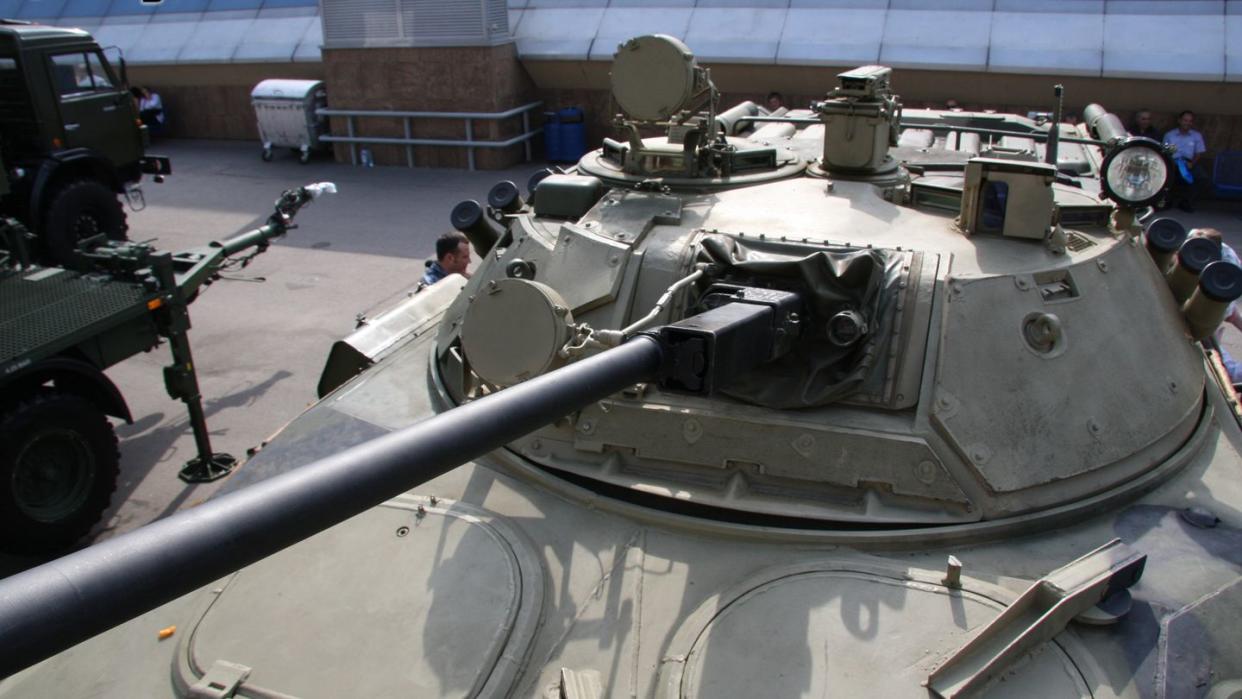
The addition of the rapid-firing Shipunov 2A42 cannon, drawing from a dual anti-personnel/anti-armor feed with 500 rounds, transformed the BTR-90 into a wheeled IFV capable of both dispatching other armored vehicles in its weight class with 3UB3 armor-piercing shells and peppering infantry at range with lethal 3UOT6 fragmentation shells.
The electrically stabilized turret also mounts a co-axial 7.62-millimeter machine gun and a launcher for four Konkurs (AT-5 Spandrel) wire-guided anti-tank missiles to snipe enemy tanks up to 2.5 miles away. Commander and gunner used the TKN-3B day/night sights with 4.75x day magnification, and passive night vision effective out to a half mile.
The vehicle’s armor was beefed up for resilience against heavy machine gun rounds from the front and medium-machine gun at the sides, while the V-shaped bottom hull reduced the risk of passenger fatalities caused by mine blasts. The BTR-90 also could optionally mount modular add-on armor, particularly Tifon explosive reactive armor bricks, to defeat or degrade rocket propelled grenade-style weapons. Other defensive features included a smoke-grenade discharger and automatic internal fire suppression system.
The 50% heavier, 23-ton vehicle was driven by a nearly twice-as-powerful Chelyabinsk 2V-06-2M 510-horsepower turbocharged diesel engine taken from the BMD-3 airborne fighting vehicle, increasing its maximum speed to 62 miles per hour, or half that cross-country. Introduction of digital engine controls, telescoping shock absorbers, a unique hydro-mechanical transmission and differential gearbox, and tires that could be individually inflated or deflated gave the BTR-90 greater agility and all-terrain mobility. This included the ability to reverse and turn at full speed, and remain moving with half of its tires destroyed.
The rear-mounted engine still prevented use of a rear ramp, but the side hatch featured a drop-down panel to serve as a step to more safely dismount.
Why Russia’s Military Jilted the BTR-90 Rostok
The BTR-90 suffered a fatal blow, however. By 1994, when the first of three protoypes was revealed at an exhibition, the Soviet Union had dissolved. The post-Soviet Russian military had basically no money to spare for improved BTRs—especially when it retained thousands of mediocre (but functional) ones.
Still, encouragement from the defense ministry led the Gorky plant to build two more BTR-90 prototypes by 1997—now beefed up with an added turret-top AGS-17 automatic grenade launcher, spaced armor (to protect against shaped-charge warheads), new external waterjets, and satellite navigation systems.
A unique BTR-90A (AKA BTR-90M) prototype was presented in 2001, which swapped in the beefier Bakhcha turret from a BMP-3. This features a low-velocity 100-millimeter gun that can fire anti-tank missiles, in addition to a 30-millimeter cannon and improved fire control systems.
Another BTR-90 variant had a Berezhok turret, sporting four large-diameter Kornet anti-tank missiles (range 3.4 miles) on two side-turret launchers. A BTR-90 was also experimentally fitted with a more powerful 660-horsepower UTD-32T engine.
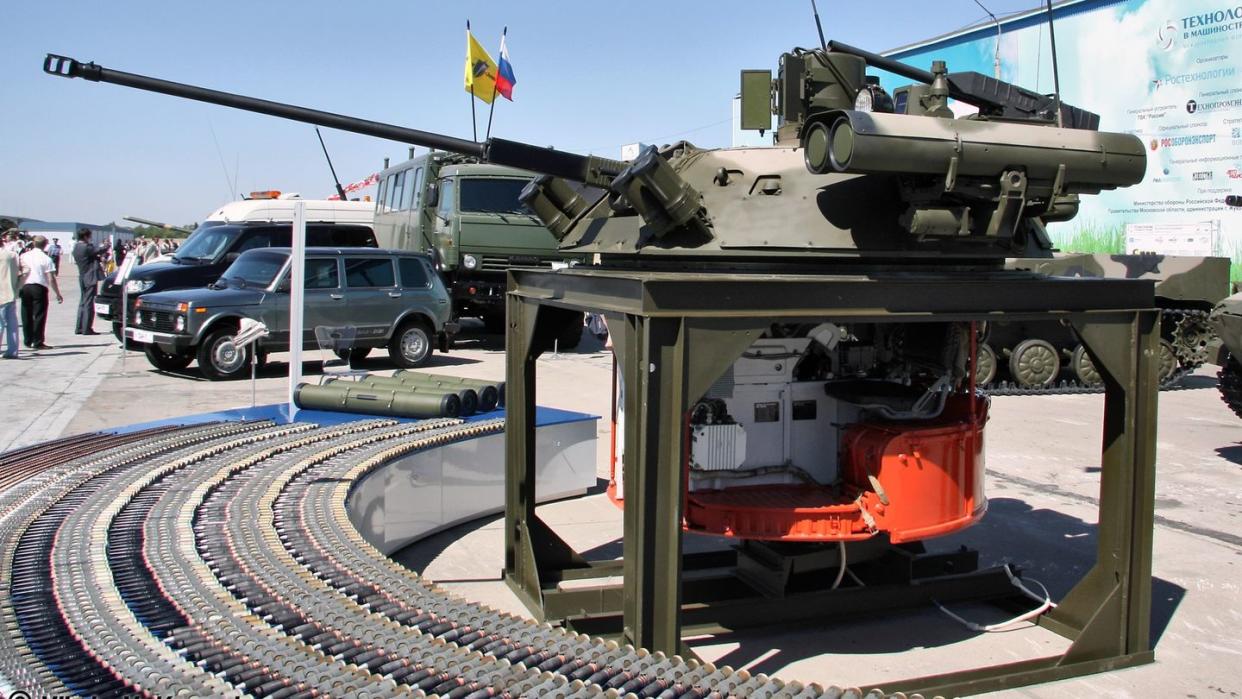
Russia’s military finally officially accepted the BTR-90 into service in 2008. But only a dozen had built by 2011 (not 80, as claimed in some sources). That’s when the Russian military declined to issue a mass production order, with then Deputy Defense minister Vladimir Popovkin deriding the design’s side-mounted doors.
That decision torpedoed an imminent contract for 600 BTR-90s, meant for export to the United Arab Emirates. These ‘tropicalized’ BTR-90s would have been kitted out with Michelin tires, Shtora active protection systems, Japanese air conditioners, twin missile launchers, and variant radios and sights.
The BTR-90 wasn’t bad, but Russia preferred a cheaper solution: upgrading BTR-80s to a new model called the BTR-82. This model would feature a 300-horsepower engine, and some would be fitted with a 17-ton BTR-82A remote-control 30-millimeter gun turret. While the BTR-82A was slower and lacked missiles, it was apparently more affordable at $435,000 new or $350,000 refurbished (in 2016 US dollars).
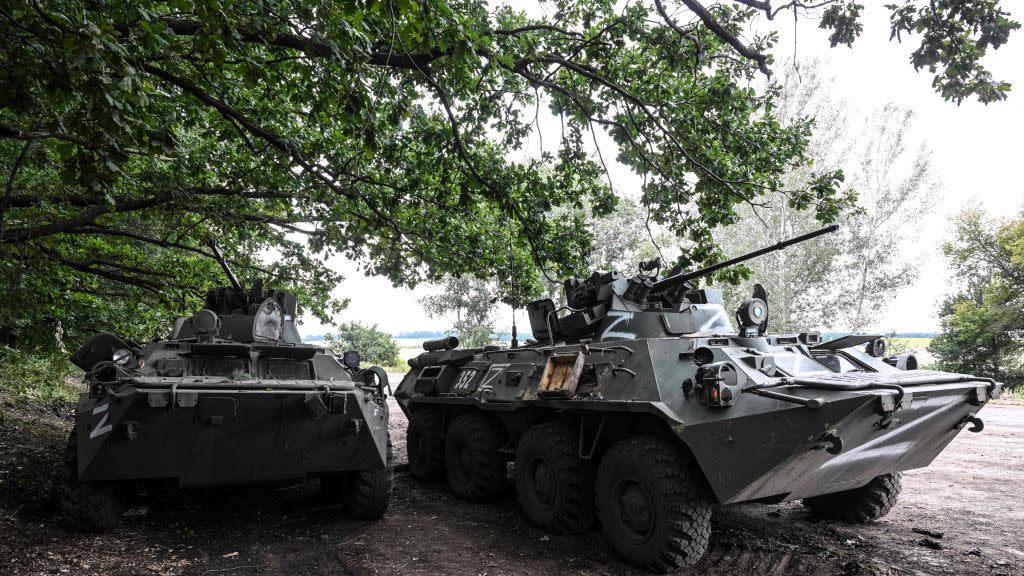
One of the BTR-90s (#2303) was put on display at Patriot Park, and another was given to the Kubinka tank museum. A third (#2302) was converted into a testbed called Krymsk with hybrid-electric transmission and the potential for conversion into an unmanned ground vehicle. The remainder were passed on to the Rosgvardyia (“National Guard”), a service intended for internal control missions.
With the BTR-80 ending production in 2017, Russia (in theory) plans for an even more advanced Bumerang wheeled APC/IFV (designated B-16 and K-17 respectively) to eventually replace the BTR-82. But since 2014, little progress appears to have been made on bringing Bumerang into production.
As Russia scrabbles to replace losses in Ukraine, its operational inventory is being watered down with more and more antiquated Soviet vehicles. It’s in that context that Russia’s military is throwing at least a few BTR-90s into the fray, despite the sustainment challenges they will doubtless face in the field.
The last-generation BTRs may at least perform better than ancient tracked BTR-50P amphibious APCs, BTR-70s, MT-LB utility tractors fitted with cannon turrets from BTR-82A, or even Russian warships. Indeed the attack saw the first recorded destruction of 1950s-era BTR-50 and naval-gun-armed MT-LBs in Ukraine.
#Ukraine: The first confirmed loss of a Russian BTR-50 APC- this one was destroyed during the ongoing offensive on Avdiivka, #Donetsk Oblast. A damaged T-64BV can be seen nearby too.
The Russian troops started to receive these rather old APCs in February of this year. pic.twitter.com/MdLoTJtVNl— 🇺🇦 Ukraine Weapons Tracker (@UAWeapons) October 14, 2023
You Might Also Like
